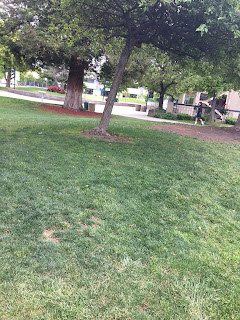Here are all the pictures we took on the Eco of Bellarmine lab.
Producer- Tree, or plants
Primary Consumer- bug
Secondary Consumer- Chicken
Tertiary Consumer- Humans (Nolan)
Decomposer- Picture of Orange with worms
Herbivore- myself because I am vegan haha
Carnivore- We found a cat in the garden, but we couldn't get a good picture.
Omnivore- Human (Jordan)
Threatened Species- Bees
Endangered Species-Bees
Non-Native Species- Cactus
Pollution Source- Car
Questions
1. Ecology is more about the organisms and their interaction with their environment, while environmental science is more about the environment and how it reacts to the organisms living around it. The animals like chickens for example adapted to living in a big group and the decomposers reacted to living around the orange tree for food.
2. There are no real specific ecosystems on Bellarmine campus, however, the garden was a big environment for populations and communities. The weather affected the plants like the cacti, and the animals changed the overall context of the community.
3. The sun produces plants, such as trees or grass. The bugs live on the tree or eat the plants. Then, the chicken will eat the bug, and then humans eat the chicken. This transfer of energy can be seen quite clearly.
4. The only real endangered of threatened species on campus we found were bees. As of since June of this year, the Bumblebee has been placed on the endangered species list. As more and more Co2 is released into the oxygen, the bees die at an alarming rate. Bees are extremely important to all life on earth because of their pollination.
5. Anything that is harmful to the environment. Pollution can occur anywhere. Things like a car because of the gas, things like machines produced CO2, and even things as simple as eat meat can all indirectly cause pollution. Pollution is everywhere, and there are a lot of things to stop it, but a lot of people either do not care about global warming or don't believe in it. The reason I decided to go vegan about 12 months ago was because I knew it would not only help myself but everything around me.













